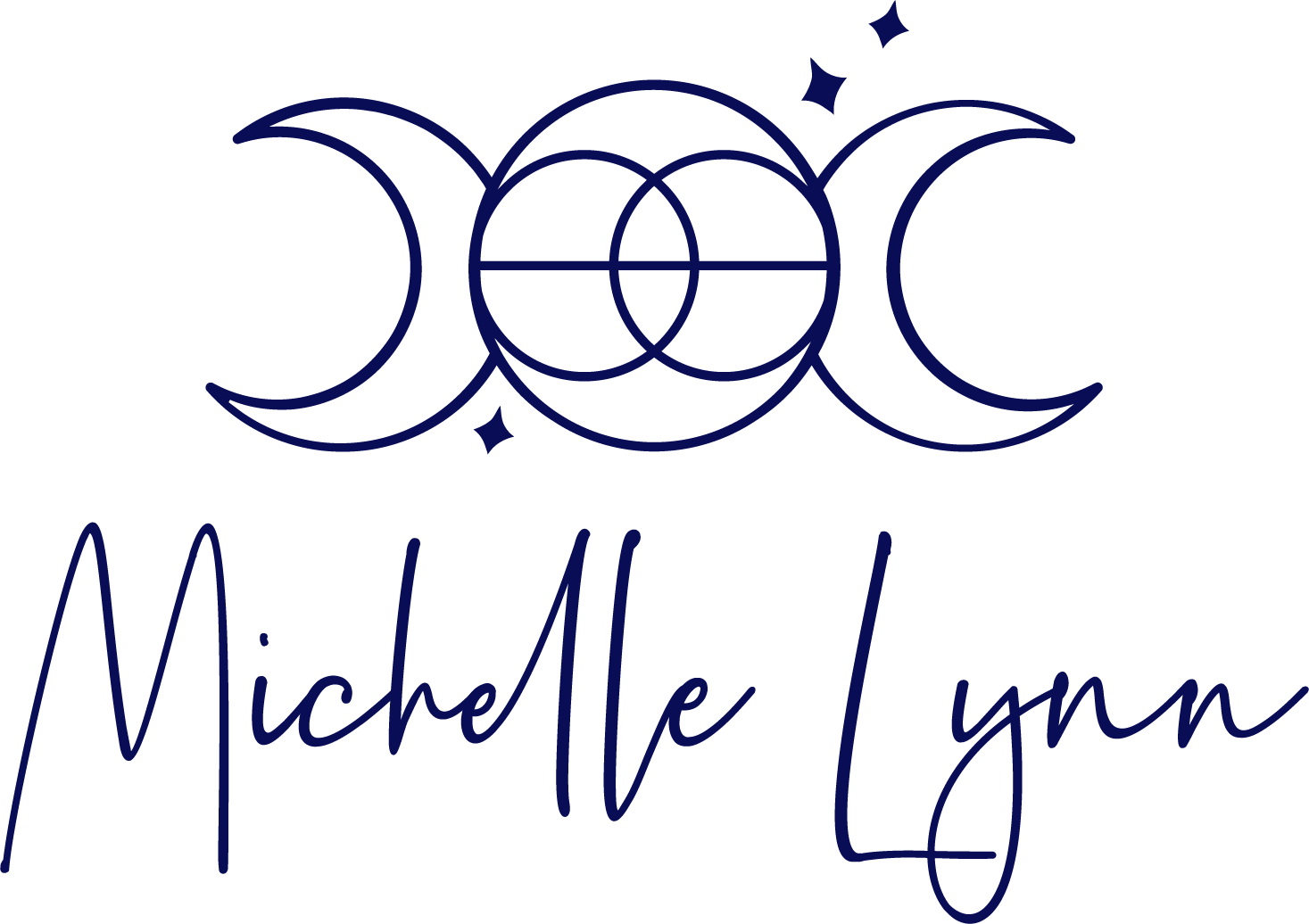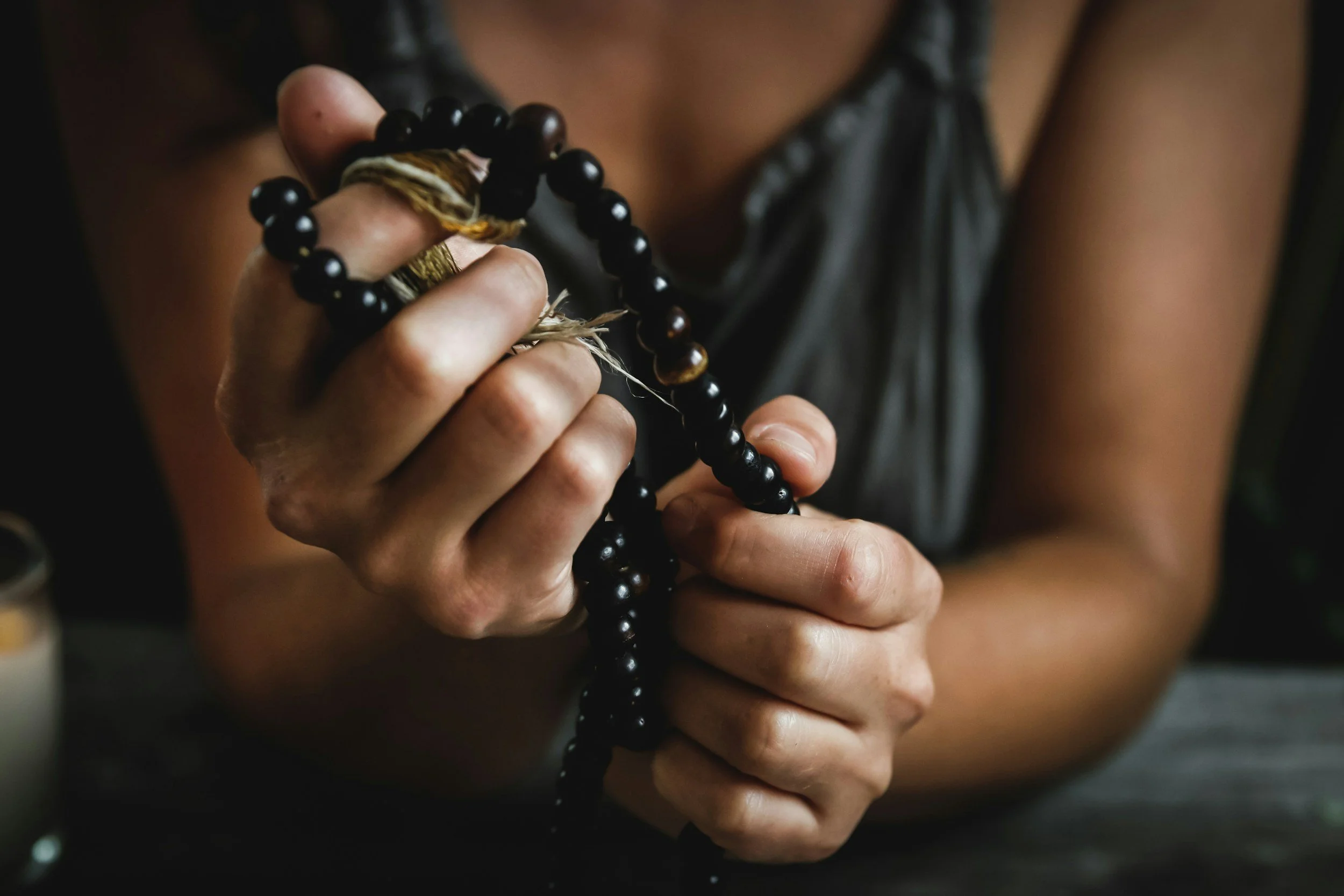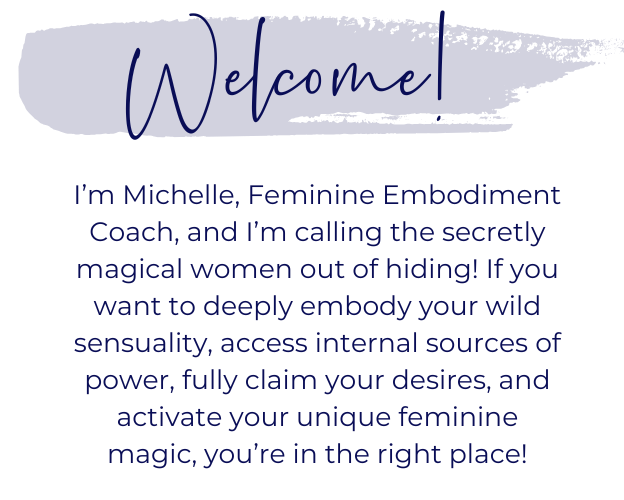Accessing Emotions You Can't Reach in Practice
I got a great question from a reader in my inbox, and since this is such a common experience when using your embodiment practice to process emotions, I thought I’d share my answer!
Hi Michelle,
I know I have a lot of anger to process, but I’m finding when I drop into my body during my practice, I can’t seem to access it. I somehow can’t seem to feel any anger. I know it’s there because it’s coming up a lot in conversations with my partner where I feel enraged, but I usually can’t stop everything to go into practice right then. And later, I can’t tap into that anger again. How do I work with this?
Sometimes we know there is something we need to process, but we find ourselves unable to bring it up or access it in practice. This is a common experience: noticing intense triggers or emotions like anger or sadness in your day to day life, but not being able to reach them and work through them when you drop into your feminine embodiment practices. If this happens to you, read on, because I’m sharing three practical tips to deal with this…
Don’t worry about trying to bring it up
I know you really want to DO something about those big emotions you know are bubbling away inside, but a really beautiful option is to just let your practice be whatever it is without trying to push or force anything to the surface.
This is the most gentle and nervous system-friendly of the three tips because you’re allowing your body to have her own timing and process. The only thing to do is drop into your practice and trust your body to bring up whatever is ready to be felt and acknowledged in its own time. You create space for yourself to feel and express, and then you let go and lean into the wisdom of your body.
The body has her own genius and intelligence. It’s non-linear, and may not always make sense to the mind. But if you allow your body to gently sensitize and release at her own pace, you can trust that all those feelings will be metabolized in due time. This process can be so slow and subtle you may not even notice something is happening. You may find something has shifted over time without any huge release or major aha moment.
We are so conditioned to prioritize peak experiences. And if we didn’t have a peak experience then it wasn’t valuable enough. This is simply not true. In fact, when it comes to peak experiences, like the high you get from going to a retreat, for example, it’s usually not sustainable for our nervous system.
Those peak experiences can even take you down afterwards. When there’s a BIG current of energy in the body, an expansion, then quite often it is followed by a contraction, like a rubber band snapping back. It’s much more gentle and grounded for the body and system to allow the process to unfold gradually in its own time.
Yeah, this takes a level of trust and surrender that might feel challenging. Guess what? That can be part of your practice too!
Sometimes that pressure to shift or get to the other side of an emotional process is actually protecting something much more tender and vulnerable that would be felt if we just slowed way down and got more subtle.
What comes up in your body around slowing down and trusting the body’s timing & process? Be with that. These are all valuable layers of the sensual realm of the body.
Journaling
A bit more activating, but still very gentle to your body and nervous system: journaling. This is where you can purposefully bring those things you’re holding but can’t seem to access, to the surface. With this approach, you start from the level of the mind to stir the pot before dropping in to the body.
You’ll want to create some time and space to do this as part of your embodiment practice. Before you drop in to your body, set a timer for 5-10 minutes and simply sit down with a pen and paper, and start writing, stream of consciousness style. It doesn’t need to make sense, just let the words begin to flow. Start telling the story - I’m so angry / sad / hopeless because… and follow the thread.
When the timer goes off, come straight onto your mat or practice space, and start moving and feeling whatever is coming up as a result of journaling. In this way, you come to the more physical side of your practice with the emotions more accessible, at the surface, ready to be explored and processed.
Activate the state on purpose
This is the least gentle - mentally and physically - of these practical tips for processing the feelings you can’t seem to access when you’re in practice. With this approach, you go into your practice purposefully activating the emotion that you want to work through.
Our bodies take the shape of our inner world, the outside reflects what’s going on inside. This is one of the reasons we do embodiment practice - so that we can “wash out” the system, unwind tension patterns, create more softness and space, and learn how to consciously animate certain states in our bodies as part of our artful expression.
It works the other way too - the inner world responds to what’s going on with the body. What you do with your physical body - consciously or unconsciously - can affect your inner feeling state. Maybe you’ve heard that deliberately smiling can create positive emotions and feelings? Or that standing in a “power pose” can make you feel more confident and less anxious?
We can use this pathway to activate the emotion you want to work with in your practice. For example, if there’s anger you need to work through, then start your session by “acting as if” you’re angry. Put on some Rage Against the Machine, stomp your feet, clench your fists, growl or yell, punch your pillows, and kick the air. This can have the effect where authentic anger starts to come out on its own. You start the process with what you’re doing with your physical body, which can activate the current of emotion, allowing it to flow out naturally.
With this approach, make sure you have plenty of time to have a full process, and take care of yourself afterward. Whenever we are working with the body and nervous system, it’s always a good idea to leave time afterwards for grounding and integration before you have to jump back into the flow of life. This is ESPECIALLY important when you’re pushing your nervous system, as with this approach. So make sure you’re feeling resourced and have capacity before you push an edge.
It can be so frustrating when we *know* there is something there which needs processing, but we can’t seem to easily access it in our usual practice methods. This can be discouraging but it doesn’t mean you’re doing anything wrong; it all takes time, and hopefully these practical tips can help you access, process, and step closer to a more embodied life.
Join my FREE Facebook group for a constant flow of tips, advice and support. And come along to my next Non-Linear Movement Method class, just $11 and held over Zoom, to awaken greater sensitivity, gently release, and start cultivating receptivity.




















